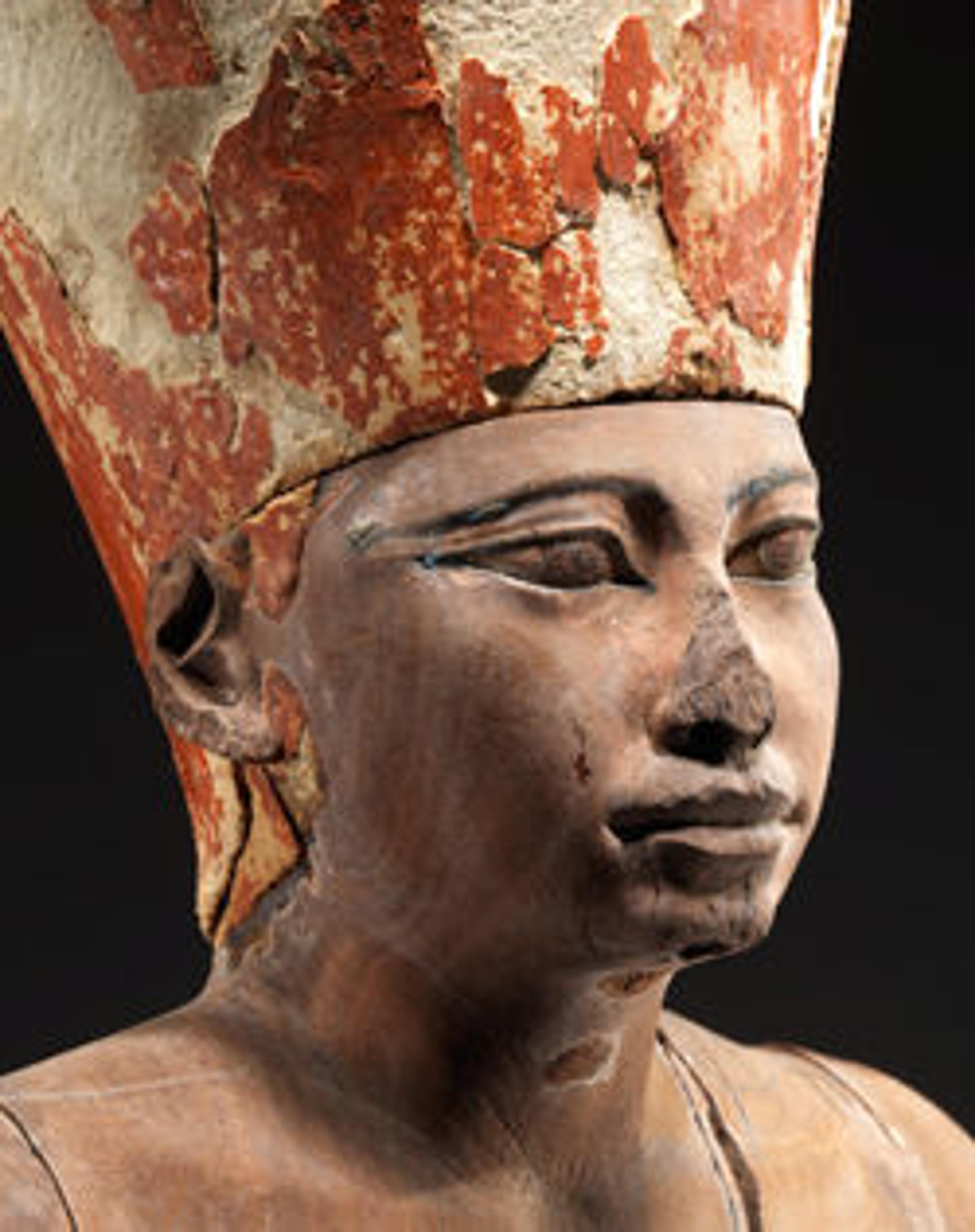Ointment jar and cover
A light blue stone called anhydrite came into use during the 12th Dynasty. This vessel was recovered from a tomb containing two burials, including that of a woman. The ancient Egyptians used stone jars to store perfumed oils, ointments, and cosmetics, items considered essential in life and the afterlife, at least for those who could afford them.
Artwork Details
- Title:Ointment jar and cover
- Period:Middle Kingdom
- Dynasty:late Dynasty 12–early Dynasty 13
- Date:ca. 1878–1749 B.C.
- Geography:From Egypt, Northern Upper Egypt, Abydos, Cemetery V, Tomb V21, Egypt Exploration Fund excavations, 1904
- Medium:Anhydrite
- Dimensions:H. 8.4 cm (3 5/16 in.); Diam. 6.3 cm (2 1/2 in.)
- Credit Line:Gift of Egypt Exploration Fund, 1904
- Object Number:04.18.48a, b
- Curatorial Department: Egyptian Art
More Artwork
Research Resources
The Met provides unparalleled resources for research and welcomes an international community of students and scholars. The Met's Open Access API is where creators and researchers can connect to the The Met collection. Open Access data and public domain images are available for unrestricted commercial and noncommercial use without permission or fee.
To request images under copyright and other restrictions, please use this Image Request form.
Feedback
We continue to research and examine historical and cultural context for objects in The Met collection. If you have comments or questions about this object record, please contact us using the form below. The Museum looks forward to receiving your comments.
